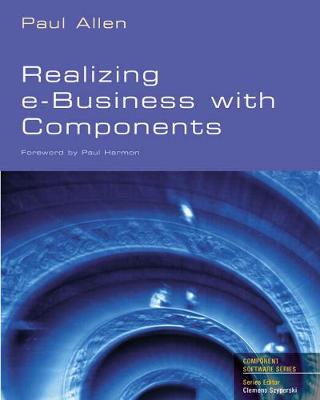What this book is about
Unfortunately, there is a great deal of hype and over-expectation surrounding e-business. Many organizations are jumping on the e-business bandwagon without understanding what they are getting into. Lack of planning and analysis, resulting in inflexible solutions that are unable to integrate with existing systems, are all too common. At the same time, e-business calls for a closer relationship between those involved in business development and those required to support these initiatives within the company's information technology infrastructure. This book is designed to provide practical advice for planning, analysis and design of e-business systems using component-based development (CBD). Just as e-business is more than a series of web pages, so CBD is not just an approach to problem solving using software building blocks. It includes architectures, processes, modeling techniques, economic models and organizational guidelines, all of which are well placed to ease migration of large organizations to e-business. The book is long on practice and short on theory. Theory is included where relevant to practical problems. The core of the book is an extensive example that tracks the experiences of a typical company, with a traditional set of business processes and supporting software systems, through various stages along the road to e-business. Who should read this book
This book is primarily intended for IT planners, architects, analysts and designers responsible for e-business solutions in large organizations. Equally it is aimed at business strategists, business process engineers and business architects. More significantly, this book is aimed at the new breeds of individual that are emerging, as the dividing lines between business and software grow increasingly blurred. More broadly the book is intended for anyone interested in modeling business components. In particular, it is hoped that the increasing number of business component and framework vendors will benefit from the increased understanding that clear and precise component models provide of their products to their customers. How to read this book
Naturally I would prefer it if you read the book cover to cover. However, with the exception of Chapter 6, which should be read after reading Chapter 5, each chapter of this book can be read individually and readers with specific interests can go straight to the subject of their choice. For those who are not familiar with component-based modeling techniques, it is important to refer to Appendix 2 for guidance. There are four parts to the book as follows. First we set the scene and explain underlying principles
Chapter 1 introduces the need for a component-based approach to e-business systems, explains the basic principles of the approach and sets the emphasis on planning, analysis and business integration. Chapter 2 looks at how to align e-business software development within the context of the organization's business goals and objectives. Chapter 3 shows how to integrate business needs into a clearly defined component architecture. Chapter 4 describes a truly component-based process framework and guidelines for dealing with these issues and to assist with planning and control of CBD for e-business. Next we come to the core of the book: a continuous practical case study
Chapter 5 provides a practical case study of how to apply a component-based approach to e-business in an organization migrating to e-business, but wanting to protect and utilize its investments in existing systems. Chapter 6 continues the case study and considers how to evolve the early solutions extending the scope to full business process integration and on to business transformation. Third, we describe three key supporting strategies:
provisioning, funding and team organization
Chapter 7 looks at how components are provis
- ISBN10 020167520X
- ISBN13 9780201675207
- Publish Date 2 November 2000
- Publish Status Out of Print
- Out of Print 13 November 2012
- Publish Country GB
- Publisher Pearson Education Limited
- Imprint Addison Wesley
- Format Paperback
- Pages 256
- Language English
